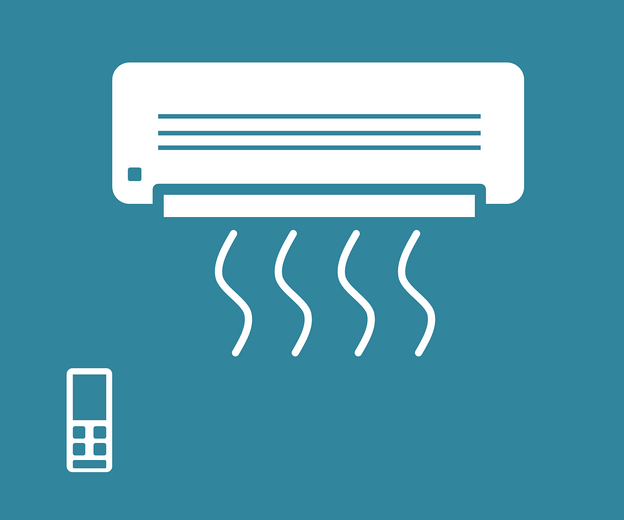
Your home is more than just four walls; it’s your sanctuary, where you spend a significant portion of your life. Ensuring that your home is a healthy and comfortable environment is crucial for your well-being. One often overlooked aspect of maintaining a healthy home is proper ventilation. Good ventilation regulates airflow, controls household temperature, eliminates air impurities and odours, and reduces the risks of condensation, residue, and mould. In this article, we will delve into these aspects of ventilation and explore the benefits of having good ventilation in your home.
1. Regulates Air Flow in the Home
Proper ventilation is essential for regulating airflow. When fresh air enters and circulates, it helps maintain a healthy indoor environment. Here’s why:
a. Removal of Stale Air: Stale air can accumulate without adequate ventilation, creating an unpleasant atmosphere. Good ventilation ensures this stale air is continuously replaced with fresh, oxygen-rich air.
b. Reduces Stuffiness: Homes with poor ventilation tend to feel stuffy and uncomfortable. Adequate ventilation prevents this by allowing for air exchange, making your living spaces feel more inviting and pleasant.
c. Allergy Management: Proper ventilation can help reduce indoor allergens such as dust, pollen, and pet dander by diluting their concentration in the air.
d. Improved Sleep: Bedrooms with good ventilation often promote better sleep. Fresh air can make your bedroom feel more comfortable, helping you get a restful night’s sleep.
2. Control the Household Temperature
Maintaining a comfortable temperature within your home is crucial for your comfort and energy efficiency. Here’s how good ventilation can help:
a. Seasonal Comfort: Ventilation can help regulate indoor temperatures in both hot and cold seasons. Summer allows hot air to escape, keeping your home cooler. In winter, controlled ventilation prevents excessive heat loss.
b. Reduced Energy Costs: Proper ventilation can reduce the need for air conditioning in the summer and heating in the winter. This can lead to significant energy savings and a smaller carbon footprint.
c. Natural Cooling: Ventilation can promote natural cooling, especially when strategically placed. Cross-ventilation, which involves opening windows on opposite sides of a room, can help cool down your living spaces without relying on air conditioning.
3. Odours
Indoor air quality is critical to maintaining a healthy home. Good ventilation is vital in eliminating air impurities and unpleasant odours:
a. Removal of Indoor Pollutants: Indoor spaces can accumulate pollutants from various sources, including cooking, cleaning products, and off-gassing from furniture and building materials. Proper ventilation helps remove these pollutants, ensuring cleaner air.
b. Odour Control: Cooking, pets, and other everyday activities can create unpleasant odours that linger in your home. Ventilation helps disperse and replace these odours with fresh air, improving your home’s ambience.
c. Health Benefits: Improved indoor air quality due to good ventilation can lead to better respiratory health, reduced allergies, and reduced risk of developing respiratory issues.
4. Mould
Excessive moisture within your home can lead to many problems, including condensation, residue buildup, and mould growth. Proper ventilation can mitigate these risks:
a. Condensation Control: Inadequate ventilation can result in condensation on windows, walls, and ceilings. Over time, this can lead to water damage and even structural issues. Proper ventilation helps control moisture levels, reducing condensation.
b. Minimizes Residue: In homes without good ventilation, residue from cooking, smoking, and other activities can accumulate on surfaces. This residue not only looks unsightly but can also be harmful. Ventilation helps disperse these particles and keeps your home cleaner.
c. Mould Prevention: Mold thrives in damp, poorly ventilated spaces. By reducing humidity levels and promoting air circulation, good ventilation significantly lowers the risk of mould growth. This is crucial for your health and your home’s structural integrity.
5. Additional Benefits of Good Ventilation and MVHR
a. Energy Efficiency and Sustainability: Good ventilation can be part of an energy-efficient home design. By incorporating features like energy-recovery ventilators (ERVs) or heat-recovery ventilators (HRVs), you can recover heat or coolness from outgoing air, reducing energy consumption.
b. Enhanced Comfort and Productivity: Proper ventilation can create a more comfortable and productive living environment. It can help maintain consistent temperatures, reduce humidity, and create a pleasant atmosphere that supports well-being.
c. Compliance with Building Codes: Adequate ventilation is often a requirement in building codes and regulations. Ensuring that your home meets these standards can avoid legal issues in the future and maintain the value of your property.
d. Decentralised MVHR systems, or individual room ventilation units, have become an alternative to central ventilation systems. These systems offer advantages, including greater control over individual room air quality, energy efficiency, and simplified installation, as they don’t require complex ductwork. However, they also come with some drawbacks. On the positive side, decentralised MVHR systems allow you to customise ventilation levels for each room, improving comfort and indoor air quality. They recover heat from exhaust air, reducing energy consumption. Additionally, installation is often less disruptive and costly compared to central systems. However, decentralised MVHR units may require more maintenance and have higher initial equipment costs when compared to traditional central systems. Furthermore, some homeowners find managing multiple units across their home more cumbersome. Weighing these pros and cons is essential when deciding whether decentralised MVHR suits your specific ventilation needs.
Conclusion
Incorporating good ventilation into your home is a wise investment in your health, comfort, and overall well-being. It regulates air flow, controls household temperatures, eliminates air impurities and odours, and reduces the risks of condensation, residue, and mould. With these benefits in mind, it’s clear that proper ventilation is an essential aspect of maintaining a healthy and harmonious living space. So, assess your home’s ventilation needs and consider improvements to enjoy its countless advantages.




 POSTED BY
POSTED BY 

